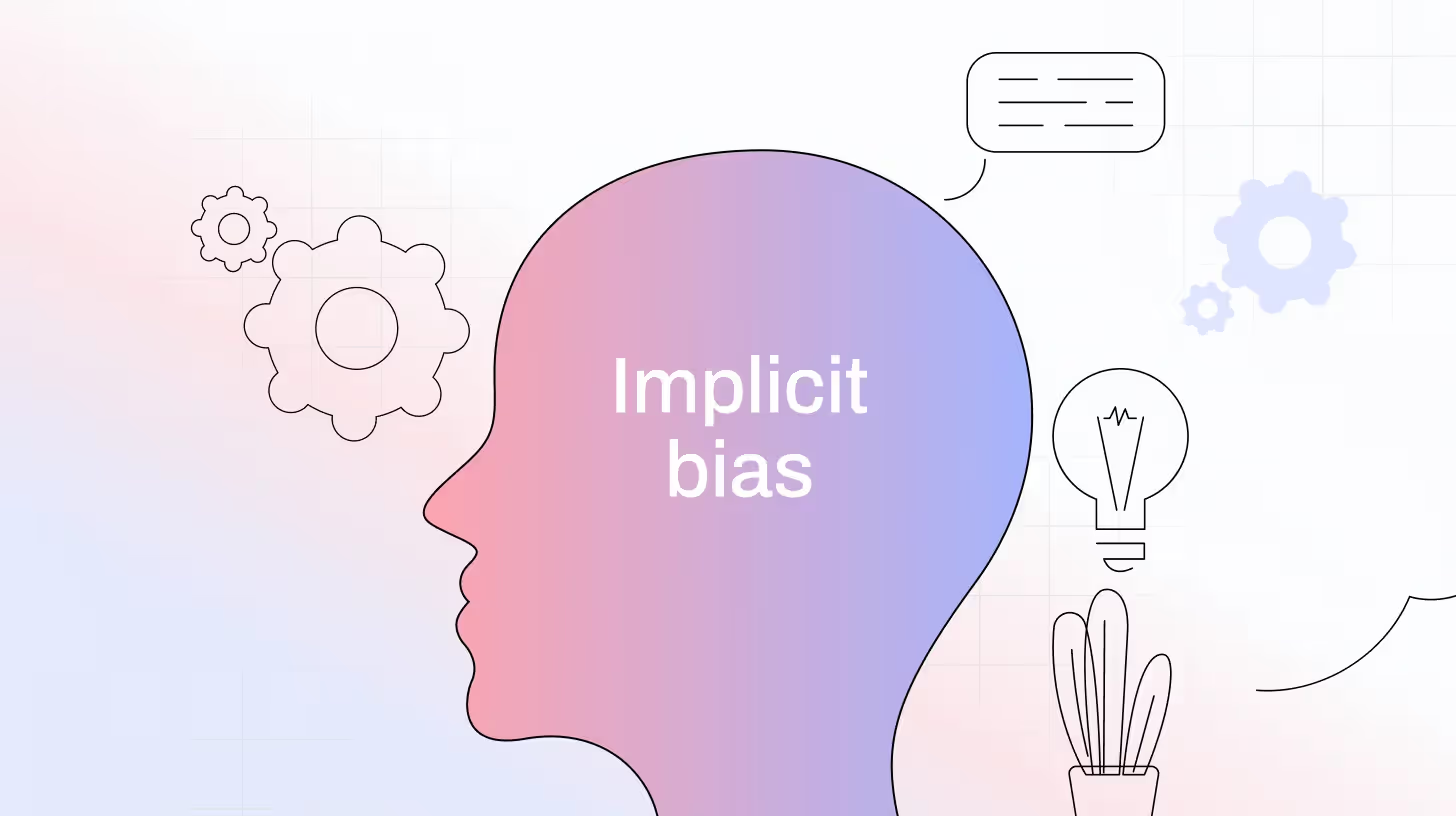 Blog
Blog 13 Must-Ask Survey Questions for Students: Survey Hacks for Educators
13 Must-Ask Survey Questions for Students: Survey Hacks for Educators13 Must-Ask Survey Questions for Students: Survey Hacks for Educators

What’s the biggest challenge teachers face every day? Is it figuring out how to balance different learning styles or cracking the code on what students really think? Maybe it’s keeping lessons fresh and engaging without burning out. Whatever it is, it often feels like guesswork.
But here’s the truth: it doesn’t have to be.
With the right survey questions for students, you can stop guessing and start building real connections. Surveys let you peek into students’ minds, uncover what’s working (and what’s not), and create an environment where they actually feel heard. Let’s dive into why these questions matter and how to make them count.
Reasons to Conduct a Student Survey
Student surveys aren’t just tools, they’re bridges. They connect educators to what students are thinking, feeling, and experiencing. By conducting student feedback surveys, teachers can:
- Identify what works and what doesn’t in their teaching methods.
- Tailor classroom activities to boost classroom engagement and interest.
- Uncover hidden barriers like mental health struggles or curriculum gaps.
- Build stronger student-teacher relationships by addressing specific concerns.
- Enhance participation by incorporating feedback into lesson planning.
- Foster inclusivity by understanding diverse student perspectives.
- Improve academic performance through targeted interventions.
- Track long-term progress to measure the impact of teaching adjustments.
These surveys also give students a platform to share their concerns, fostering a sense of ownership in their education. When conducted regularly, surveys track progress over time, helping educators adjust strategies for better outcomes. From improving student satisfaction to fostering a supportive environment, surveys are key to better teaching and learning.
Common Challenges When Crafting Student Survey Questions
Crafting a great survey for students is harder than it seems. Common pitfalls include:
- Overloading questions: Long surveys cause fatigue and lower response rates.
- Vague phrasing: Questions like “What did you think of class?” lead to unclear answers.
- Leading bias: Phrasing like “How helpful were our excellent teaching methods?” influences responses.
- Survey fatigue: Administering too many surveys throughout the year can overwhelm students, leading to disengaged and rushed responses. Teachers should limit the number of surveys to avoid this.
- Unbalanced question types: Overusing one type of question, like multiple choice, can lead to narrow insights. A mix of open-ended, Likert scale, and ranking questions provides a fuller picture.
The key? Keep it simple, unbiased, and actionable. Use a mix of question types to gather well-rounded insights.
13 Must-Ask Survey Questions for Students
Including the right survey questions for students ensures useful, actionable feedback. Here’s why these questions work: they encourage honest, reflective answers while covering key areas like satisfaction, engagement, and learning preferences.
1. What motivates you to learn?
Understanding what drives students can help tailor lesson plans to their interests and keep them engaged. For example, some students might find motivation in collaborative projects, while others prefer independent challenges.
Similar questions:
- What inspires you to stay focused in class?
- What excites you most about learning?
- How do you stay motivated during challenging lessons?
2. Which classroom activities help you the most
This question identifies which teaching methods resonate with students. Responses guide teachers in emphasizing activities that foster learning, like hands-on experiments or group discussions.
Similar questions:
- What type of classroom exercises do you find most engaging?
- How do small group activities impact your learning?
- Which tools (e.g., tech, worksheets) make understanding easier?
3. How supported do you feel by your teacher?
Gauging teacher support highlights areas for relationship-building and trust. Students who feel supported are more likely to succeed.
Similar questions:
- Do you feel comfortable asking for help?
- How frequently does your teacher check in with you?
- What could your teacher do to support your goals better?
4. How would you rate today’s lesson?
This feedback allows teachers to adjust their approach in real-time, ensuring lessons are engaging and understandable.
Similar questions:
- Was today’s lesson clear?
- What part of today’s class stood out to you?
- Is there anything you’d like to learn differently next time?
5. What’s one thing you’d improve about this class?
This open-ended question encourages constructive feedback, giving students ownership of their learning environment.
Similar questions:
- What changes would make this class better for you?
- Are there topics you feel deserve more focus?
- How could the class atmosphere improve?
6. Do you feel included in classroom discussions?
Inclusivity fosters confidence and participation. This question helps identify barriers to engagement.
Similar questions:
- Do you feel your opinions are valued?
- How comfortable are you sharing ideas in class?
- What would make discussions more engaging for you?
7. How can this school better support your goals?
This question connects broader school resources to student aspirations, encouraging goal-oriented planning.
Similar questions:
- What resources do you need to achieve your goals?
- Are there extracurriculars or workshops that could help?
- How could the school’s programs be more aligned with your future plans?
8. What’s one thing you want your teacher to know?
This personal question opens a direct communication channel, helping teachers understand students’ unique needs.
Similar questions:
- Is there anything about your learning style you’d like to share?
- What challenges are you currently facing in class?
- How do you feel about the way your teacher interacts with you?
9. How do you learn best (e.g., hands-on activities, lectures)?
Discovering preferred learning methods allows teachers to adapt their strategies for better outcomes.
Similar questions:
- Do you prefer visual, auditory, or hands-on learning?
- What teaching style helps you grasp concepts best?
- How do you feel about integrating tech in learning?
10. What’s the hardest topic we’ve covered so far?
This helps pinpoint subjects where students struggle, guiding review sessions or extra support.
Similar questions:
- Which topic do you feel needs more explanation?
- What part of the curriculum do you find most challenging?
- How can we make tough topics easier to grasp?
11. What activities make class more fun?
Fun activities enhance engagement and break monotony. This feedback helps plan energizing lessons.
Similar questions:
- What’s your favorite class activity?
- Which games or interactive tools do you enjoy most?
- How could we add more fun to learning?
12. How do you feel about your workload?
Balancing workload ensures students remain productive without feeling overwhelmed.
Similar questions:
- Are assignments manageable?
- How could homework stress be reduced?
- What’s your ideal amount of weekly classwork?
13. What’s one accomplishment you’re proud of this year?
Celebrating successes boosts confidence and motivation. Responses also reveal areas of personal growth.
Similar questions:
- What’s a moment in class that made you proud?
- Which project or assignment stands out to you?
- How have you improved this year academically or personally?
Read - Teacher Survey for Students: The Key to Better Teaching
Tips and Strategies for Successful Student Surveys

Creating an effective online survey for students doesn’t have to be overwhelming. Here are a few tips to help you design surveys that actually get responses:
- Keep it concise but impactful: Short surveys with focused questions are more likely to be completed. Aim for no more than 10-12 questions.
- Mix question formats: Variety keeps things engaging. Use multiple-choice for quick answers, rating scales for insights, and open-ended prompts for deeper feedback.
- Assure anonymity: Students are more honest when they know their answers are confidential. Always clarify that their feedback is private.
- Add relatable examples: Students connect better when questions feel relevant to their lives. Use examples from familiar scenarios.
- Incentivize participation: Rewards like extra credit, certificates, or small tokens of appreciation can go a long way in boosting completion rates of your survey.
- Test your survey beforehand: Share it with a small group of students or colleagues to ensure clarity and effectiveness. This helps you avoid misunderstandings and refine your questions.
- Distribute at the right time: Timing matters. Avoid survey fatigue by administering surveys during less stressful periods, such as after a major project or exam.
- Follow up on feedback: If students know their input leads to change, they’ll be more motivated to participate in future surveys. Share the outcomes and actions taken based on their feedback.
- Encourage student input: Allow students to suggest questions or topics they’d like to see in the survey. This not only increases engagement but also makes them feel valued.
Read - 50 Survey Questions Examples for Students
Frequently Asked Questions
Q: What are the best times to conduct student surveys?
A: The ideal times include the beginning of the year to set expectations, mid-year to track progress, and end-of-year for overall feedback. Timing around major assessments can also provide useful insights.
Q: How do I encourage students to complete surveys honestly?
A: Ensure anonymity, use clear and simple questions, and explain how their feedback will be used. Adding small incentives can also boost participation rates.
Q: What types of survey questions for students should I use?
A: Use a mix of rating scales, open-ended prompts, and multiple-choice questions. This variety helps you gather both qualitative and quantitative insights.
Q: How long should a student survey be?
A: Aim for 10-12 survey questions for students to maximize response rates while ensuring you gather enough actionable data. Keep the survey under 10 minutes.
Q: How can surveys improve teaching methods?
A: Surveys highlight areas where students feel engaged or struggle, enabling teachers to adapt their strategies. They also foster a collaborative environment by incorporating student feedback.
Create Engaging Student Surveys in Minutes with TheySaid
Imagine designing a student survey that not only gets completed but also delivers insights you can act on immediately. That’s exactly what TheySaid offers. With AI-driven features, you can:
- Generate engaging, tailored survey questions in seconds.
- Use real-time feedback tools to track student satisfaction surveys.
- Get detailed analysis with actionable insights delivered on a single dashboard.
Stop guessing what works in your classroom and start knowing. TheySaid helps you create surveys that truly listen to your students, making your job easier and their experience better. Ready to revolutionize your surveys? Try TheySaid today!





.webp)









.svg)